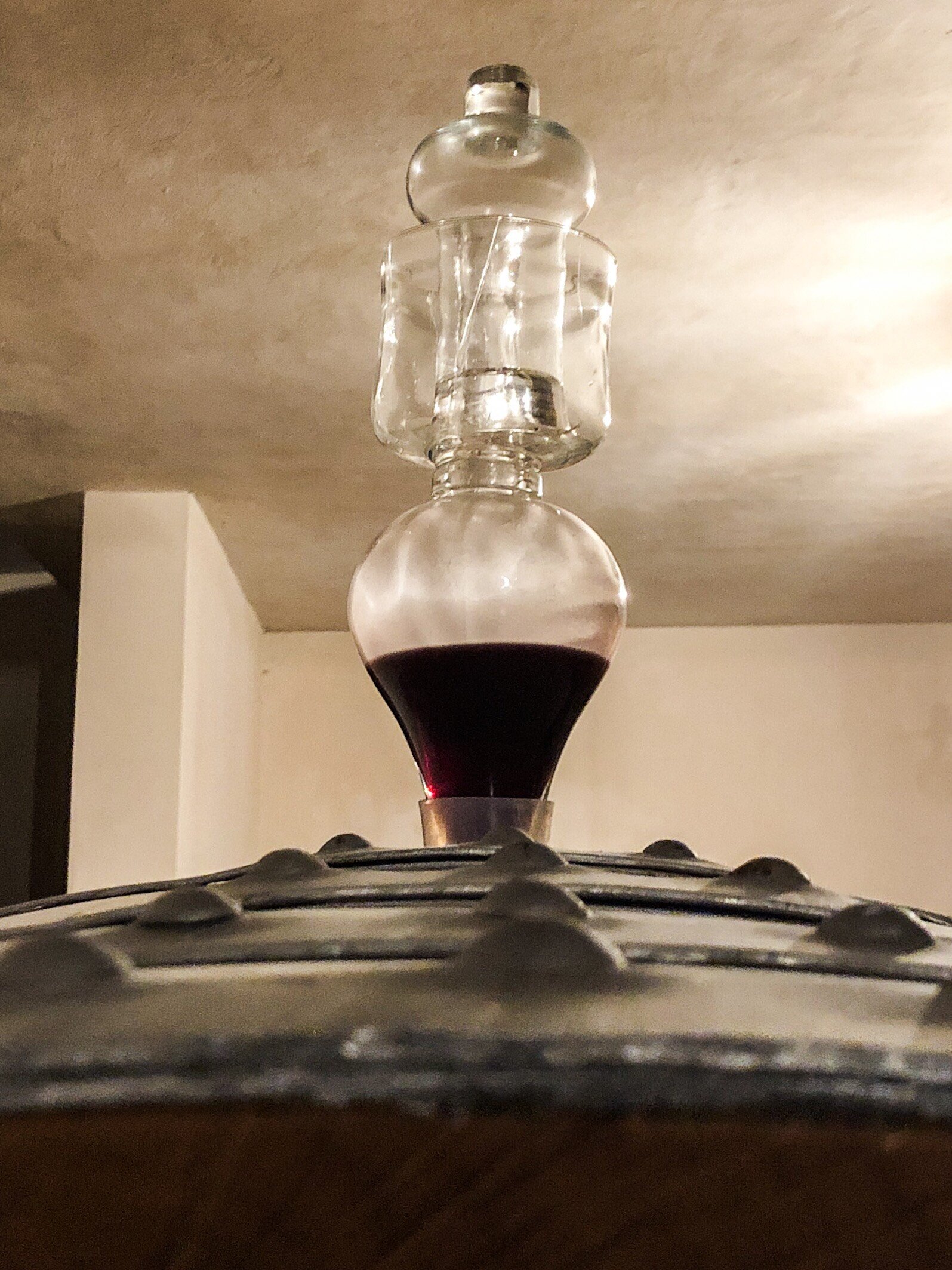On the 500th Anniversary of his death, I couldn’t NOT write about arguably one of the most prolific polymaths ever: Leonardo da Vinci. Born Leonardo di ser Piero da Vinci in 1452, this illegitimate son of a notary and peasant woman from Vinci (a small hamlet just outside of Florence) is today known as one of the greatest artists of all time, the father of paleontology and architecture, and inventor of machines and devices—some way ahead of their time.
What I wanted to get to the bottom of, however, is the legend I had heard since becoming a sommelier in Italy—that da Vinci invented a simple yet ingenius device in wine-making called the airlock (sometimes fermentation lock)—that mesmerizing glass (sometimes plastic) ornament you see on top of oak barrels in winery cellars.
What is an airlock and what does it do?
An airlock can be used both during and after the fermentation process. Its main functions are the following.
1) During fermentation process, the airlock allows carbon dioxide, a fermentation by-product, to exit the wine vessel without oxygen exposure thanks to the water chamber that forms a barrier between the wine and air.
2) Post-fermentation, the airlock allows you to see if the resting wine is expanding or reducing without having to open the vessel and expose its contents to oxygen. While producers will fill their wine vessels completely, there is still what they call an “angel’s share'‘—evaporated liquid—which creates a vacant space that oxygen will try to fill. Alternatively, the wine can expand if the wine’s temperature rises.
3) Thanks to the airlock, winemakers can top up the empty space in the wine barrel created by evaporation without oxygen exposure; they simply remove the top, pour wine from the same harvest directly into the wine chamber base, and cover when done.
How does an airlock work?
The airlock consists of three parts. The base, the water chamber and a top. The base is inserted into the barrel and partly filled with racked wine. A ringed chamber sits around the top part of the base and is partly filled with water. The top then covers the narrow upper part of the base and dips into the water chamber. Carbon dioxide can pass through the water in the form of bubbles, but oxygen will not enter the base. The water is changed every few days to prevent bacteria build up.
So did Leonardo da Vinci invent the airlock or not?
After consulting various Italian wineries as well as a Tuscan glass museum, there is, unfortunately, no proof that Leonardo da Vinci invented this extremely helpful and elegant piece of equipment. The earliest evidence of the tappo colmatore (Italian for airlock) wasn’t until the early 19th Century, and those models were initially used during just the fermentation process to take advantage of the carbon dioxide release.
HOWEVER…
What is proven is Leonardo da Vinci was not only a wine lover, but also a vineyard owner! In 1498, he was gifted a vineyard in western Milan from Lodvico Il Moro, Duke of Milan, as payment for the painting of The Last Supper in the refectory of Santa Maria della Grazia. Records show the 16-row vineyard was dear to him; on his deathbed, Da Vinci even bequeathed it to the father of one of his pupils and his servant so that it would be continued to be cared for. The vineyard survived for 450 years until Allied Bombing destroyed it in 1943; recently La Vigna di Leonardo, an organization that has been involved with the replanting of the vineyard (with the original vine stock), has opened a museum on the site and has partnered with a team of researchers to actually make a limited number of bottles. (In case you are wondering, the main grape variety planted is Malvasia di Candia, an ancient aromatic variety thought to have originated in Crete and brought to the Italian peninsula by the Venetians hundreds of years ago.)
In conclusion, while there is no proof that Leonardo da Vinci invented the airlock, one can only imagine his gears set in motion while thinking about how to better the wine made from his own vineyard. Perhaps like many of his inventions, the airlock became commonplace centuries after he designed it.
La Vigna di Leonardo






